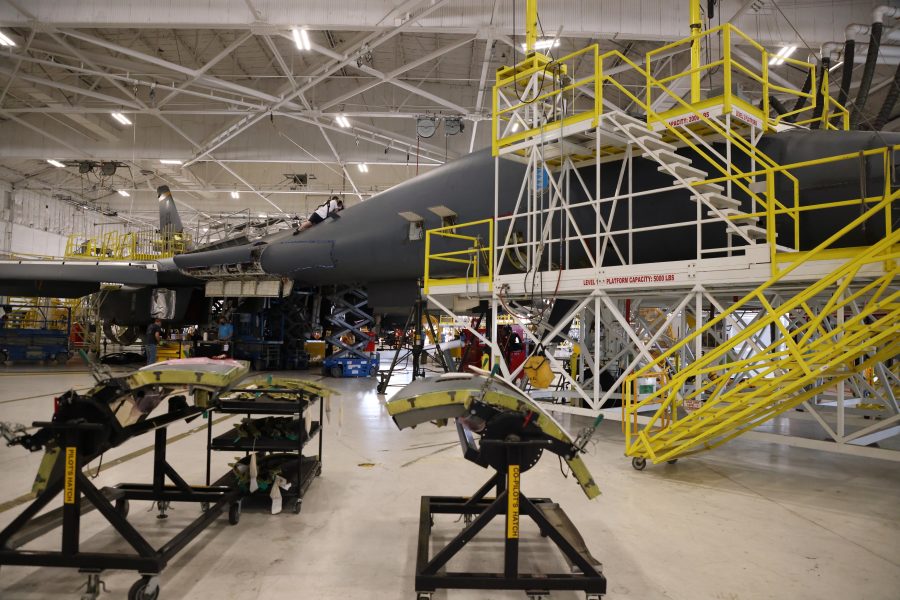The Air Force is resurrecting yet another of its B-1 bombers from the “Boneyard” at Davis-Monthan Air Force Base, Ariz.
On July 2, an aviation photographer snapped images of a B-1, tail number 86-0115 and nicknamed “Rage,” taking off from Davis-Monthan. A service spokeswoman confirmed to Air & Space Forces Magazine on July 24 that the bomber had been regenerated by the 309th Aerospace Maintenance and Regeneration Group and was being flown to Tinker Air Force Base, Okla., for updates and depot maintenance before being added back to the fleet.
“At the request of Air Force Global Strike Command, Air Force Materiel Command is in the process of regenerating a B-1B to replace aircraft -0126, which was undergoing heavy structures repair development at Boeing-Palmdale,” the spokesperson said. “Analysis determined regenerating an aircraft in AMARG storage could be accomplished faster, at lower cost and risk, than continuing the Boeing repair project.”
According to other photos captured by aviation enthusiasts, Aircraft 86-0126, nicknamed “Hungry Devil,” was assigned to Dyess Air Force Base, Texas. The Air Force spokesperson said the B-1 was at Boeing-Palmdale as part of an effort to develop a depot-level repair process for the Forward Intermediate Fuselage (FIF).
The spokesperson declined to say when “Rage” will finish repairs and return to the operational B-1 fleet, citing operational security concerns.
This marks the second B-1 regeneration in just a few months—in March, the 7th Bomb Wing at Dyess announced it was resurrecting a bomber nicknamed “Lancelot” to replace a B-1 that caught fire during an engine run in April 2022, resulting in a massive fireball that sent shrapnel flying hundreds of feet and the total loss of the aircraft.
Still another regeneration may be needed soon. A B-1, tail number 85-0085, crashed at Ellsworth Air Force Base, S.D., in January, which severely damaged the aircraft. The spokesperson said a final decision on the Ellsworth aircraft’s disposition—whether it can be salvaged or not—is still pending.
Should another regeneration happen, though, the Air Force will have resurrected three of the 17 B-1s it retired between February and September 2021, four of which were to be maintained “in a reclaimable condition,” Air Force Global Strike Command noted at the time.
While Congress repealed prohibitions on retiring B-1 bombers as part of the 2021 National Defense Authorization Act, lawmakers have passed other provisions mandating a fleet of at least 92 bombers in the Primary Mission Aircraft Inventory, and forbidding the Air Force from modifying the designed operational capability statement for any B-1 squadron so that it can reduce capability or personnel—moves that could compel the Air Force to replace any B-1 incapacitated by mishap or years of hard flying.
The AMARG at Davis-Monthan regularly reactivates aircraft for the Pentagon, NASA, and partner nations. Aircraft sent to the Boneyard can be maintained in different conditions, depending on whether the Air Force wants to preserve the option to un-retire them. Generally speaking, the AMARG removes explosive devices, such as ejection seat motors, upon intake, then fills fluid lines with a preservative oil, closes off openings to keep animals and birds from nesting in the aircraft; and cover the cockpit, intakes and exhaust with a spray-on latex preservative to diminish the destructive effects of sun and heat.


